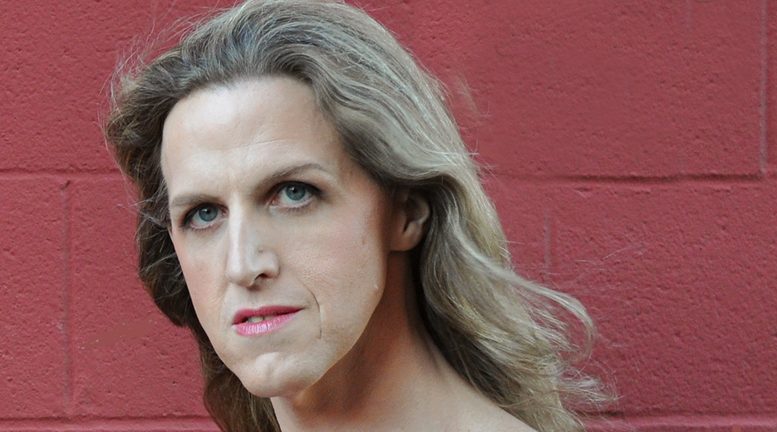The Self, My Identity And What It Means To The Recipients
By: Lorelei Erisis*/TRT Columnist—
Identity.
Who are we? Who do we tell people we are?
I talk, and think, a lot about identity myself. And I thought it might be useful to share some of those thoughts with you.
I believe that identity, for the most part, is audience dependent. Who I say I am tends to be different depending on who I’m talking to. I think perhaps I notice this more starkly because I tend to talk to a much wider range of people than most folks.
To be clear, who I am, in myself, does not necessarily change, except perhaps over long periods of time, incrementally. But when I’m alone with myself, in my own thoughts, I’m just me, this person I am.
All of the words I attach to who I am, to describe who I am, to identify myself, are mostly for you, whoever the audience of the moment is. And though the words might change, depending on whom I’m talking to, who I am, does not.
Perhaps I think about this so much because I’m an actor. That’s one of the words I use to describe to you who I am: actor. I have often, as an actor, had the experience of being different people, very intentionally wearing different identities. But even when I’m doing that, when I’m telling you I’m a Latvian aristocrat, who is a scientist and also sort of a loner, I’m still me underneath all that. And yet, for those moments that I’m telling you I’m a Latvian aristocrat, that is who, by mutual social and linguistic agreement, I am. And hopefully, if I’m doing my job, it is for all intents and purposes of the moment, real.
I’m not saying that my identities, or yours, are as mutable and temporary as all that actor-being-a-Latvian-aristocrat business. But, I use it to demonstrate why I tend to be so aware of audiences and who I am telling them I am.
Here’s a quick digression to clear up what I mean by an audience.
What I’m talking about is any other person, or people, outside of yourself, that you are attempting to communicate with or present yourself to. An audience in these terms could be your partner, or your coworker, your family, friends, teacher, boss, children, or just people in the street–anyone whom you want to have a particular understanding of who you are.
It is my experience that we wear different identities for all these different audiences. We are different people, with different labels, though who we are fundamentally, inside ourselves, might not actually change.
And what I’m saying is that the understanding of who you are that you might wish to convey tends to change depending on what you want these audiences to understand about you.
For instance, if I’m talking to a group of other trans people, I might simply describe myself as a woman. She/her pronouns, thank you very much. I might also make reference to myself as being trans. But, I wouldn’t necessarily go to all the bother of saying I’m a male-assigned-at-birth (AMAB), transgender woman. The transgender part is assumed in that case, and also not a particularly distinguishing characteristic, though perhaps still crucial to my belonging in the group.
However, if I’m talking to a group of cisgender people, especially whom I don’t have an established history with, I may well decide to identify myself as a transgender woman. If they are queer cisgender people, I might be able to shorthand that to trans woman.
Sometimes, for the sake of particularly “straight” cis-folks, inexperienced with gender fluidity or the range of trans identities, I’m a transsexual. I don’t really think I fit our own trans community definition of that identity very well. But for them, it’s going to get them a lot closer to understanding who I am if I use a label they already have some familiarity with.
And, it’s not entirely inaccurate. I have changed my body through the medical intervention of hormone replacement therapy. And, for a long time, I considered further surgery. So, in this instance, transsexual will do. It becomes, to them, what I am.
Similarly, if I’m with a group of cis people who don’t have much knowledge of trans experiences, I might say that I am a woman and have always known as far back as I have a memory that I was a woman. And that’s true. But it’s also a radical simplification.
Because, if I was discussing the same experience of identity with a group of trans folks, or trans-aware cis folks, I would say that I am a woman, and knew quite early on that the way I was being gendered felt wrong. But it took me a long time to first understand what that feeling of being gendered incorrectly meant and then to accept that it was because I was a woman. And then, it took me even longer to have the words to describe the experience in those terms.
Honestly, I would not have used or even really known the word “gendered” in this context, more than eight or 10 years ago, despite it being most useful to describe that specific feeling. So frankly, I would have described to myself that I have always known I was a woman because that was as close to accurate as I could get with the words and identities at my disposal.
Nonetheless, who I am, to myself, remains the same. Even if who I tell you I am might change.
Labels, identities, are just words and concepts that we use to convey to people broad ideas of who we are to ourselves, or whom we want to be to them. A label is not who I am. But it is how I want you to understand me. Those labels sometimes change, or I might also use other labels. Our public identities tend to be comprised of a conglomeration of all those labels that we use. Our public identity is what those labels add up to when we are trying to tell an audience whom we think we are.
Language is a magic trick. With language, we create our realities. I am a woman. I tell you I am a woman, and you treat me as such, see me as such.
But for a long time, I told people I was a man, and that was how I was treated and seen.
“Woman” feels more right than “man” ever did. It feels much more in line with my wordless, interior sense of who I am. I feel happier when my audience treats and sees me as a woman than when they treated and saw me as a man.
And yet, who I am to myself has never fundamentally changed. There was no switch flipped. In my own head, I’m still me. The same me that I was yesterday, last year, and the year before that—the same me I can remember being as far back as I can remember, even though I have told a bunch of different audiences a bunch of different labels about who I am; even though I have sometimes changed identities like suits of clothes.
All of it is just me trying to convey to you, a sense of who I am. I’m trying to make you see this incredibly detailed, high definition photograph of who I am to myself. But, all I have is words, a bunch of stock identities that changes depending upon the audience.
But inside, to myself, I’m just me.
Slàinte!
* Lorelei Erisis is an actor, activist, adventurer and pageant queen. Send your questions about trans issues, gender and sexuality to her at askatranswoman@gmail.com.







